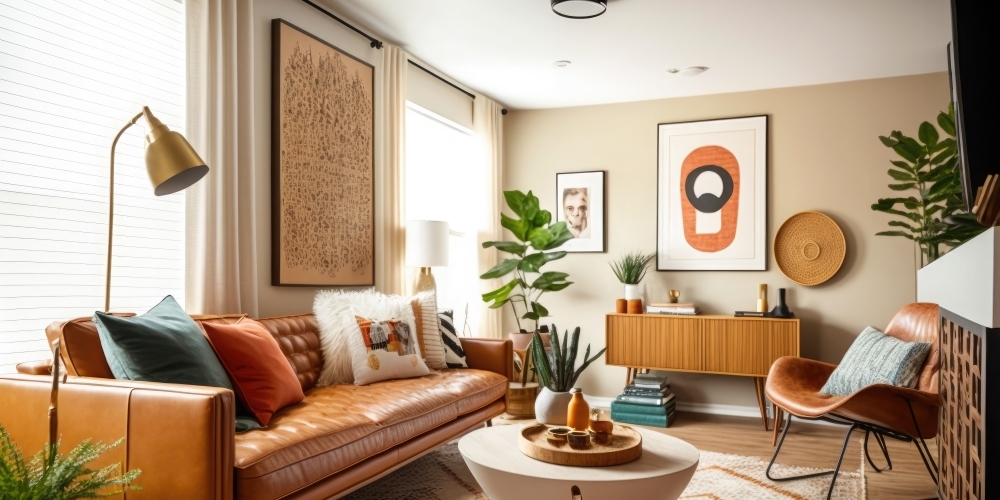
Elevating Spaces: The Crucial Role of a Website for Interior Decorators
In the digital age, an online presence has become synonymous with professional credibility and accessibility. For interior decorators, whose craft revolves around transforming spaces into visual masterpieces, having a well-designed website is not just a luxury but a strategic necessity. In this comprehensive guide, we explore the hows and whys of why it is crucial for an interior decorator to have a website.
1. Showcasing Portfolio: A Visual Symphony of Expertise
Why:
An interior decorator’s portfolio is their virtual showroom. In a world where the first impression is often digital, having a curated online portfolio allows potential clients to witness the breadth and depth of your expertise with just a click.
How:
Populate your website with high-quality images of your completed projects. Include a diverse range of styles, color schemes, and layouts to showcase your versatility. Use before-and-after visuals to highlight your transformative abilities.

2. Client Testimonials: Building Trust Through Experience
Why:
Trust is a cornerstone in the client-decorator relationship. Featuring testimonials on your website provides social proof of your skills and professionalism, assuring potential clients that they are in capable hands.
How:
Request feedback from satisfied clients and prominently display their testimonials on your website. Consider incorporating case studies that delve into the specific challenges of a project and how your expertise addressed them.
3. Personal Branding: Establishing a Distinct Identity
Why:
Your website is a canvas to paint your professional identity. It allows you to define your unique style, design philosophy, and the values that set you apart from other interior decorators.
How:
Develop a brand narrative that communicates your approach to interior design. Use consistent branding elements such as a logo, color palette, and typography across your website to create a cohesive and memorable brand image.
4. Accessibility and Convenience: A 24/7 Digital Presence
Why:
In the fast-paced world we live in, clients often research and make decisions outside of traditional working hours. A website ensures that your work is accessible to potential clients anytime, anywhere, providing a convenient way for them to explore your services.
How:
Optimize your website for mobile responsiveness to cater to users browsing on smartphones and tablets. Include an easy-to-navigate menu structure that guides visitors through your portfolio, services, and contact information seamlessly.
5. Educational Content: Positioning as an Industry Expert
Why:
Beyond showcasing your work, your website is a platform to share your knowledge and expertise. By offering valuable content, you position yourself as an authority in your field, instilling confidence in potential clients.
How:
Start a blog on your website discussing interior design trends, DIY tips, or insights into your creative process. Share your expertise through downloadable resources such as e-books or guides. This not only adds value but also attracts organic traffic to your site.
6. Contact and Inquiry Handling: Streamlining Communication
Why:
A website serves as a centralized hub for potential clients to get in touch with you. It streamlines communication by providing a clear avenue for inquiries, reducing the chances of missed opportunities.
How:
Include a dedicated contact page with a user-friendly inquiry form. Ensure that your contact details are easily accessible throughout the site. Implementing chatbots or live chat features can further enhance real-time communication with visitors.

7. Search Engine Visibility: Expanding Your Reach
Why:
In an era where Google is often the first stop for individuals seeking services, having a website optimized for search engines is paramount. It expands your reach beyond word of mouth and local advertising.
How:
Implement SEO strategies by incorporating relevant keywords into your website content. Use meta tags, image alt text, and descriptive headers to enhance your site’s visibility on search engine results pages (SERPs).
8. Portfolio Management: Adaptability and Growth
Why:
A website provides a scalable platform for portfolio management. As your body of work expands, your website can effortlessly accommodate new projects and updates, ensuring that your most recent and impressive works are always on display.
How:
Organize your portfolio into categories or projects, making it easy for visitors to navigate. Regularly update your portfolio with new projects, and consider creating a dedicated section for featured or highlighted works.
Designing Success in the Digital Age
In the competitive field of interior decoration, a website is not just a digital accessory; it’s a powerful tool that can elevate your business to new heights. From showcasing your portfolio to establishing your brand identity and streamlining communication, a well-crafted website is the digital storefront that speaks volumes about your professionalism and expertise.
As an interior decorator, your website is your virtual canvas—paint it with your unique style, fill it with the colors of your creativity, and let it tell the story of your design journey. In doing so, you’re not just creating a website; you’re crafting a digital masterpiece that opens doors to opportunities, builds trust with clients, and propels your interior decorating business into the forefront of the industry.